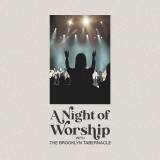VOCAL EQUALIZATION (Part 4) -Mixing Vocals : The Ultimate Guide to EQ’ing Vocals

Mixing vocals could be considered the most important part of your mixing job. For instance, people will tolerate a poor acoustic guitar mix when the vocals shine through. This isn’t to say you shouldn’t put effort into creating an all-around solid mix. My point is that when the vocal mix suffers, everyone notices. How do know your vocal mix was bad? Have you ever heard these complaints; “I couldn’t hear the lead singer,” “I couldn’t understand what they were singing,” or the worst complaint, “they sounded terrible, what happened?”
This vocal mixing guide gives you the information needed for creating a solid vocal mix every time. By the end of this guide, you’ll know what you need to do, when you need to do it, and how to do it.
This guide breaks down the vocal mixing information into eight areas;
- How Vocals Fit in a Mix
- Key Vocal Qualities
- Vocal Microphone Selection and Monitor Usage
- Mixing with the End in Mind
- Setting Vocal Volumes
- Preparing Your Vocals (Cleaning up your Vocals)
- Mixing Vocals / EQ’ing Vocals
- Using Five Types of Effects Processing
1. How Vocals Fit in a Mix
Vocals are mixed to make the way they are used, the style of song that is being performed, along with a few other aspects for consideration. This section covers all of those.
A. ARE THEY A LEAD VOCALIST OR BACKING VOCALIST?
The first part of mixing vocals, or mixing ‘a vocalist,’ is knowing the use of that vocalist in the song arrangement. A vocalist is either going to sing a lead part in the song or they are going to sing in a way that supports the lead singer. In the latter case, they would be considered a backing singer or backing vocalist.
A lead singer, just as it sounds, is the singer that leads the song. They sing the primary vocal line. A band can have multiple lead singers. The first song could have singer A and the second song could have singer B. One song can jump between multiple lead singers. In some instances, more than one person can lead the song so you have multiple lead singers. How you blend or contrast them is something that’s covered later.
Backing singers can sing in a variety of ways;
- Sing along side the lead. This might happen at a chorus when everyone sings the same words at the same time.
- Sing behind the lead. They might sing a highlighting phrase (the same line as the lead for a moment) or completely different words.
- Sing separate from the lead. This can happen when the song arrangement calls for the lead singer to step out of the way so a choir or backing singer can step in and sing out for a bridge or chorus or whatever the arrangement calls for them to do.
B. MATCHING THE GENRE OF MUSIC / STYLE OF THE BAND
Ten years ago, it was safe to make a statement like, “don’t mix a rap singer like you are mixing a country song.” Now, there are popular country songs which feature a rapper. I think this is a sign the end of the world is near! That unusual combination aside, you need to sculpt your vocal(s) so you create a sound that fits in with the genre of the song.
Take three different music genres; country, rock, and gospel. Regarding the use of vocal reverb across these genres, the type and amounts of reverb will be different. You might use heavy vocal reverb in a rock mix but would never think of using that same effect in a traditional gospel music mix. Whatever your situation, your band will tend towards playing in a particular style. They might change up a song and one day do, “the reggae” version of a song. But, it’s safe to say your band has their own sound and you need to treat your vocal mixing so you are mixing to their desired sound.
Here’s where you might have problems. If your band plays a contemporary style of music along the lines of Hillsong or Chris Tomlin or David Crowder but YOU don’t like that type of music then you are going to be mixing against your bias. You might like the Southern Gospel style or are more of a country music fan or even a “traditional hymns” fan. You’ll find yourself either;
- Mixing so the result sounds like your musical preference.
- Mixing a poor mix because you can’t get into the music.
- Mixing a great mix because you know the importance of your job.
That last bit is a great way of improving your mixing and creating a good vocal mix to match the song. Listen to a professional recording of the song and then listen to music in other genres and listen for the differences in how vocals are mixed. You’ll learn how genre / style of song makes a difference in vocal mixing.
C. MATCH THE EXPECTATIONS OF THE PEOPLE AND OF THE ROOM
This part gets a little tricky. You don’t want listeners to actively drive your mixing. However, you do have to respect their expectations. Imagine you are mixing 150-person room. You can’t create the same type of mix that would rock a 1,500 person room. Believe me, it doesn’t work. You can’t put a ton of hall reverb on a vocal in a small room without sounding out of place. At the same time, if the congregation isn’t used to vocal delay, as an effect, then that’s probably not something you want to use in many of your songs. This isn’t to say you can’t use it, as an arrangement calls for it; you just need to be careful with how and when you use it.
In the world of church audio, you can have five different churches each with their own worship band and they can all sound completely different. But they can also all sound completely right. It’s a matter of what sound the band desires, what works in the room, and what works with the congregation. Of course, this can be said for mixing the instruments as well as the music.
One final tip which is important in church audio; don’t make people sound like someone totally different. You can change a lot about a vocalist’s sound but don’t go so far that people think, “he/she sounds nothing like that.” Reverb and delay are good effects so don’t think I’m talking about that type of change. Don’t change the core of their true sound.
D. LISTEN TO THE MIX THE BAND USED
Working with vocal mixing and vocal eq’ing would cause your brain to explode if you had NEVER heard ANY music ever sung. But you know a few songs, right? You know “Happy Birthday,” and perhaps a few thousand other songs you’ve already forgotten. My point is you know how lead vocals and backing vocals are generally mixed in a song. Generally. What you need to learn, to really kick up the quality of your vocals, is how those vocals need to sound in the particular song you are mixing. A great way to do this is through the use of reference tracks.
You can use reference tracks in two ways. First, you could listen to seven different versions of a song, and get an idea of three or four or seven different ways of mixing the vocals. Or, secondly, you could do what my church does (and many others do the same) and find out what songs the worship leader has picked out for the week and then have them send you links to the YouTube / Spotify / iTunes version of the song that closest matches the arrangement and sound of what they plan on doing. Using this method, by listening to the reference track over and over, you’ll eventually hear the details of the vocal mix arrangement. As a side note, you’ll also hear how the instruments should be mixed. The long and short of it is reference tracks are great for planning your live vocal mix.
One last note on reference tracks and planning your mix; take advantage of first impressions. You will hear a song differently the first time than the second or third or tenth. As studio engineer Dave Pensado said, “There’s only one time to hear a song the first time, and I like to catalogue my first impressions because I trust them. So I’ll begin the process by pulling out pen and paper and noting down the weaknesses and strengths of a song.” In this case, do that with the vocals. Make note of what stands out, what emotion comes from the vocals, and where the vocals might suddenly sit back or sound different in the mix.
VOCAL EQUALIZATION (PART 3)
VOCAL EQUALIZATION (PART 2)
VOCAL EQUALIZATION (PART 1)
Source: Behind The Mixer
VOCAL EQUALIZATION (Part 4) -Mixing Vocals : The Ultimate Guide to EQ’ing Vocals
 Reviewed by Admin
on
3:32:00 PM
Rating:
Reviewed by Admin
on
3:32:00 PM
Rating:
 Reviewed by Admin
on
3:32:00 PM
Rating:
Reviewed by Admin
on
3:32:00 PM
Rating:
















Post a Comment